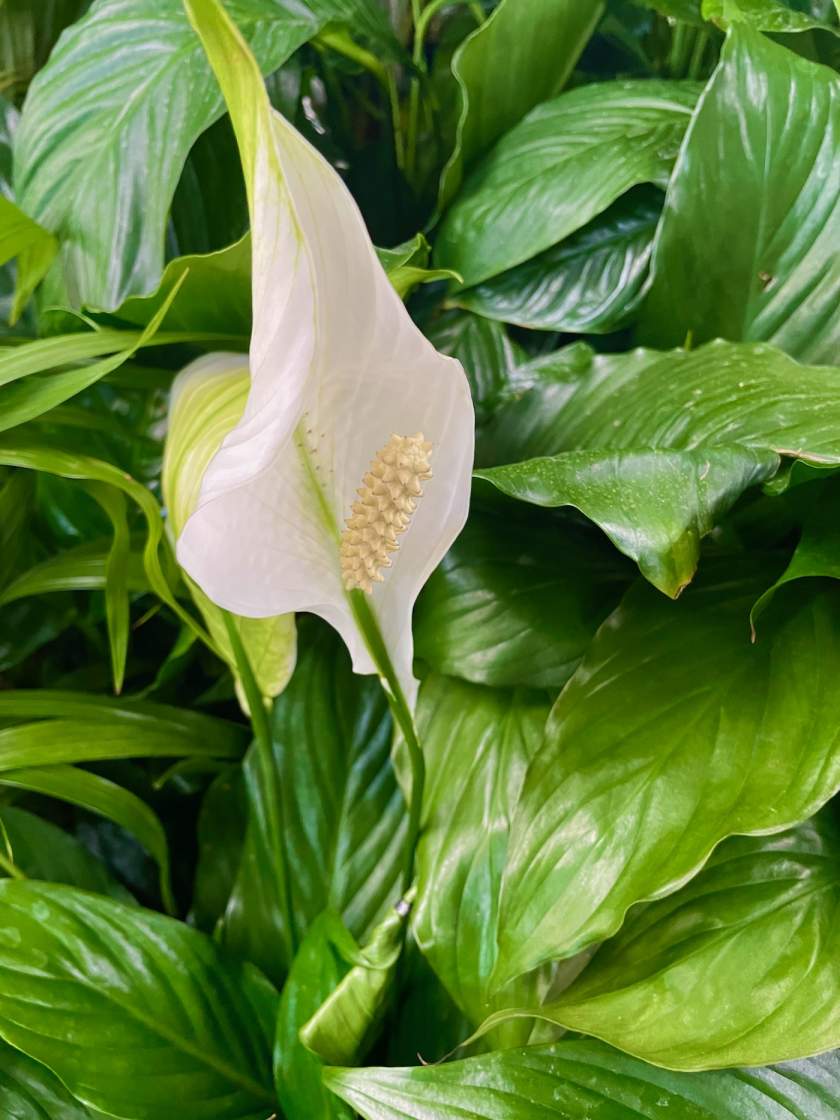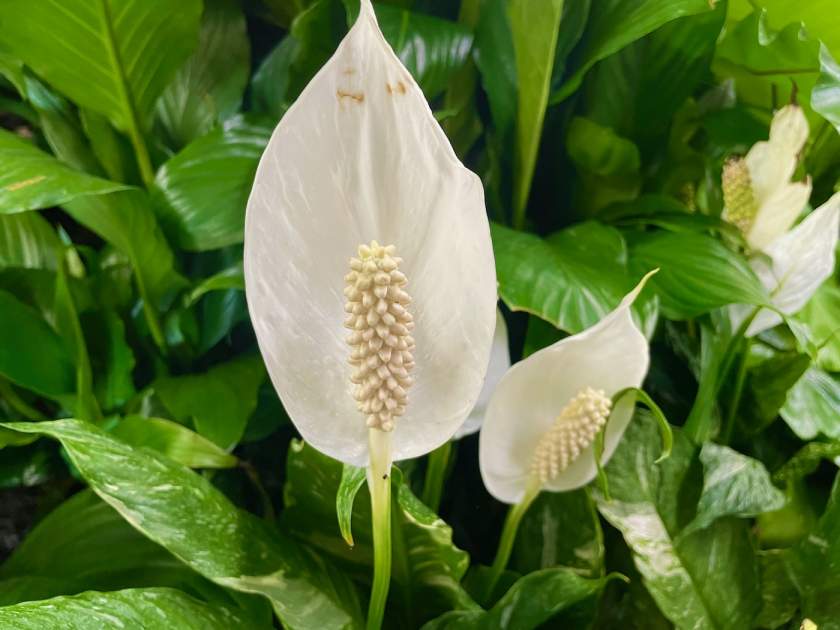Spathiphyllum: The Resilient Peace Lily with Elegant White Blooms
Spathiphyllum, commonly known as the Mauna Loa Peace Lily, Peace Lily, Spathe Flower, or White Sails, is a genus of flowering plants comprising approximately 40 species. As a herbaceous perennial, the Peace Lily is predominantly grown as a houseplant, admired for its glossy deep-green foliage and striking white blooms. With its adaptability and long-lasting flowers, the Peace Lily adds an elegant touch to indoor spaces. Let’s delve into the characteristics of its leaves and flowers, and explore the best practices for its cultivation.
Discovery and Name Origins:
The genus Spathiphyllum was first described and published by Heinrich Wilhelm Schott and Stephan Endlicher in 1832 in Meletemata Botanica. The description of the genus by Schott refers to “Spatha foliaris persistens,” where “spatha” represents a spathe and “foliaris” is an adjective modifying spathe, meaning “relating to a leaf.” Additionally, “persistens” signifies the continuing or persisting nature of the spathe. The term “phyllum” in Spathiphyllum also references a leaf. Spathiphyllum is native to regions in Central America and Asia, where it thrives in its natural habitat.
Symbolism and Common Name:
The Peace Lily, one of the common names for Spathiphyllum, is derived from the plant’s symbolic representation of peace, purity, and healing. The white blooms of the Peace Lily have been associated with the white flag, which is universally recognized as a signal for a truce. The serene and calming presence of the Peace Lily has made it a popular choice for various occasions and settings, evoking a sense of tranquility and well-being.
Characteristics:
The Peace Lily, scientifically known as Spathiphyllum and belonging to the Araceae family, is a versatile plant with the following notable characteristics:
Leaves: The Peace Lily boasts beautiful, glossy green leaves. As the plant ages, it remains acaulescent, meaning it appears to have no stem. This low-maintenance plant maintains its attractive foliage, making it a visually appealing choice for indoor spaces.
Flowers: The Peace Lily produces stunning white blooms that resemble sails or spathes. These flowers have no specific bloom time but are intermittent in medium lighting conditions. The blossoms are long-lasting and complement the plant’s deep-green foliage. While the flowers are initially pure white, they gradually change to a pale green shade after approximately ten days.
Cultivation of Spathiphyllum:
Successfully cultivating the Peace Lily involves providing the appropriate conditions for its growth and well-being. Here are essential cultivation considerations:
Sunlight: Spathiphyllum thrives in partial sunlight. While they can tolerate shade, they require filtered light when grown indoors. Placing the plant near an east-facing window is ideal for optimal growth.
Watering: The Peace Lily prefers moist soil but not overly saturated conditions. Allow the soil to dry slightly between waterings, ensuring it does not become completely dry. Water the plant with room temperature water that has been allowed to sit for a while, allowing the chlorine to evaporate. Avoid overwatering, as this can lead to yellowing leaves.
Soil: Provide Spathiphyllum with well-drained soil that retains moisture. A high-quality potting mix enriched with organic matter is ideal for its growth. It’s crucial to choose a pot with good drainage to prevent waterlogging, as the plant is sensitive to damp soil conditions.
Pest and Disease: Peace Lilies are generally resistant to pests and diseases. However, cold drafts and temperatures below 40°F (4°C) can impede their growth. Mealybugs are the most common indoor insect infestation for Peace Lilies. Regularly clean the leaves with a damp cloth to remove dust and deter pests. Dust tends to accumulate on the bottom of the leaves, making it an ideal spot for pests to gather.
Propagation:
The Peace Lily can be propagated through division. During repotting, divide the plant by separating small offshoot crowns adjacent to the main parent plant. Each divided section should have at least two leaves and attached roots. Plant the divided sections in a moist, well-draining potting mix, and keep them in a warm and well-lit area. The roots will establish themselves in less than a month.
Additional Notes:
- It is recommended to use a large pot for Spathiphyllum and allow the plant to remain somewhat pot-bound. However, if necessary, repotting can be done in February or March t provide the plant with sufficient space for growth and development.
- When repotting Spathiphyllum, ensure to keep the plant in a warm and well-lit location. This will support the re-establishment of the plant’s roots, which typically occurs within a month.
Spathiphyllum, known by various common names such as Mauna Loa Peace Lily, Peace Lily, Spathe Flower, and White Sails, is a resilient houseplant admired for its glossy green leaves and elegant white blooms. Its adaptability to different lighting conditions and moderate care requirements make it an excellent choice for indoor spaces. By providing filtered sunlight, appropriate watering, well-drained soil, and regular maintenance, you can enjoy the beauty of the Peace Lily in your home or office. Embrace the serene ambiance and lush foliage of the Peace Lily, and let its elegant white blooms brighten your surroundings.
The NASA Clean Air Study discovered that Spathiphyllum has air-purifying properties, effectively cleansing indoor air of specific environmental contaminants such as benzene and formaldehyde. This quality makes it an excellent choice for improving indoor air quality.





